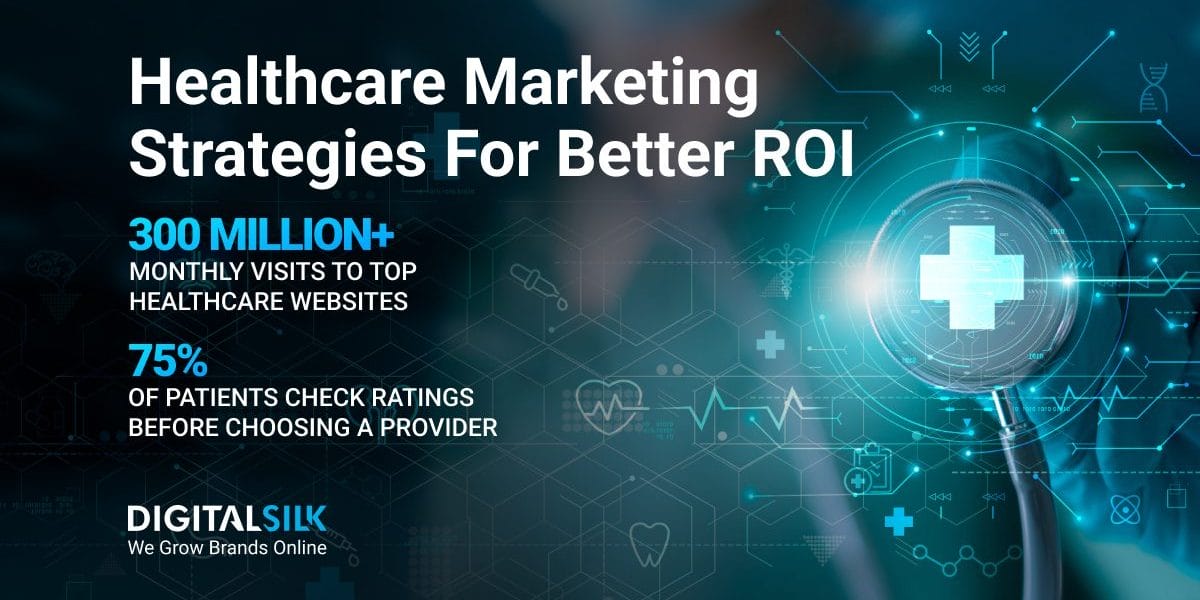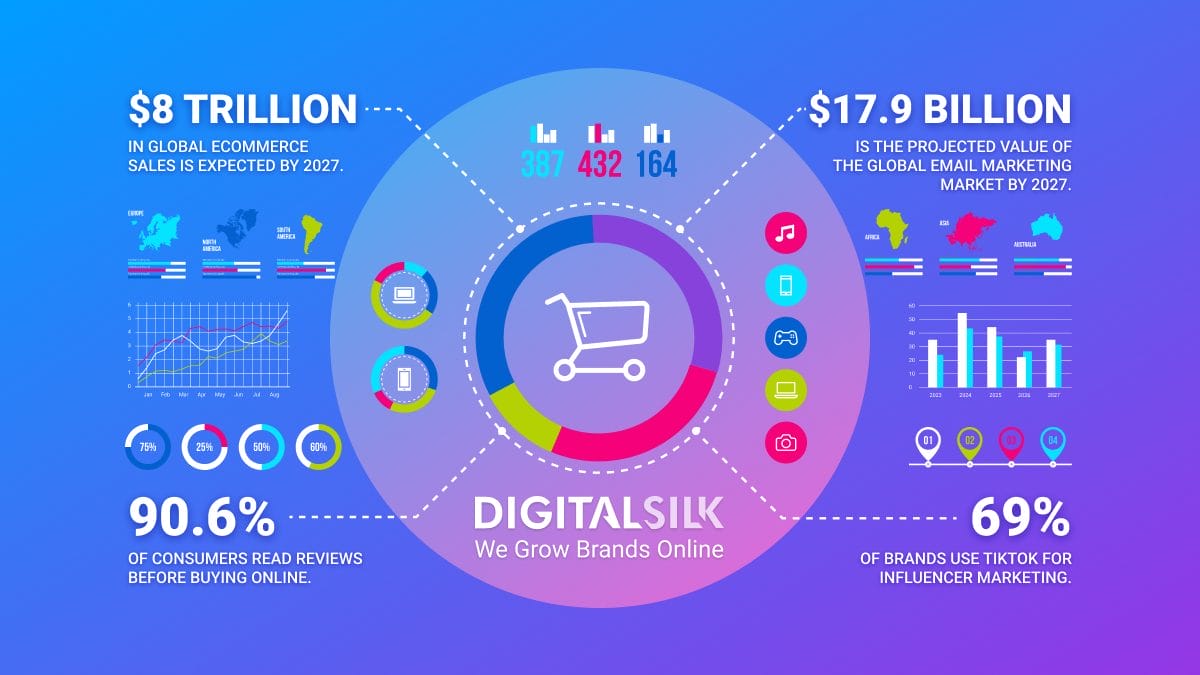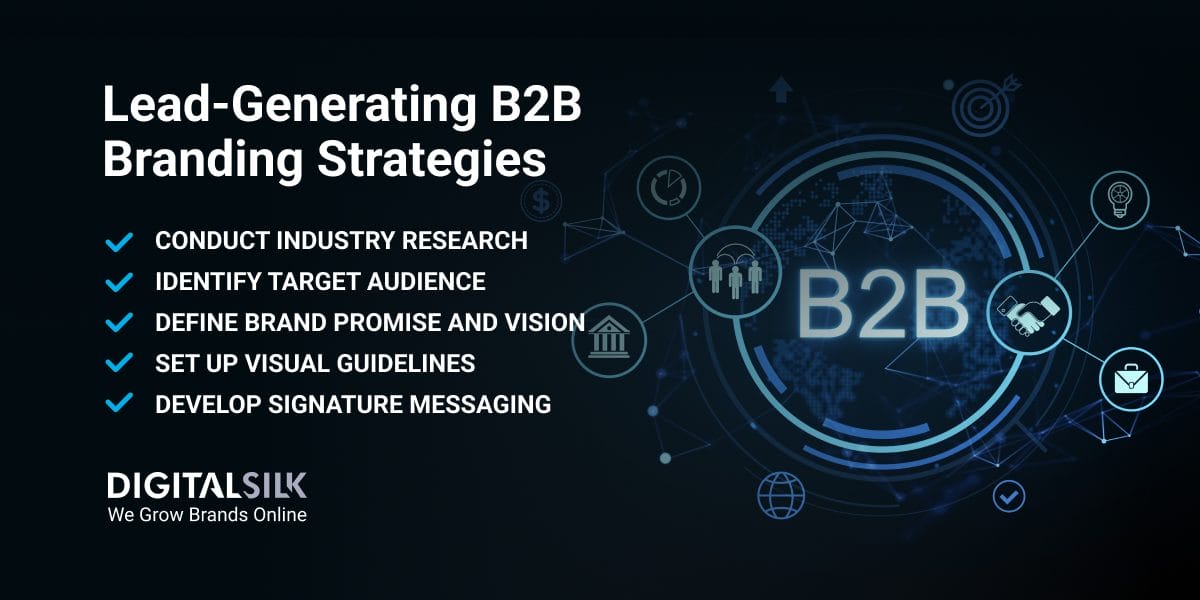Healthcare Marketing Strategies: Key Highlights
-
Data drives better ROI: Analytics and KPIs help optimize spend and improve patient acquisition.
-
Patient-first digital experiences convert: Mobile design, accessibility and automation boost engagement and bookings.
-
Multi-channel marketing works best: SEO, PPC, social and referrals drive visibility and long-term growth.
Two of the world’s top healthcare websites attract over 300 million visits each month — a clear indicator that patients are turning to digital channels first when making care decisions.
For hospitals and health systems, that means digital visibility is critical and a business imperative.
Below are 15 proven strategies, from SEO and PPC to telehealth campaigns and ROI tracking, that will help you attract and retain patients.
15 Healthcare Marketing Strategies That Drive Growth
Digital channels have become essential to patient acquisition, and a well-executed healthcare marketing strategy can determine whether patients find your brand or your competitors.
| STRATEGY | KEY FOCUS |
| 1. Data-Driven Strategy | Use analytics, KPIs and CRM tools to guide spend and track ROI. |
| 2. Patient-Centric Website | Improve UX with responsive design, accessibility and intuitive navigation. |
| 3. SEO Optimization | Boost search visibility with local SEO, structured content and E-E-A-T. |
| 4. PPC Advertising | Capture high-intent traffic through targeted keywords and ROI-focused campaigns. |
| 5. Content Marketing | Educate and build trust with in-depth, multimedia health content. |
| 6. Social Media Engagement | Reach patients through platform-specific strategies and targeted ads. |
| 7. Email Automation | Use HIPAA-compliant segmented campaigns to boost retention and conversions. |
| 8. Reputation Management | Generate reviews, respond to feedback and build trust. |
| 9. Referral Programs | Enable seamless physician referrals with portals and proactive communication. |
| 10. Telehealth Promotion | Market virtual care options with clear messaging and follow-up strategies. |
| 11. Marketing Automation | Streamline outreach with CRM-integrated automation and AI tools. |
| 12. Inclusive Marketing | Tailor content to diverse communities with cultural relevance and accessibility. |
| 13. ROI Tracking | Measure CPA, multi-touch attribution and brand visibility to optimize spend. |
| 14. HIPAA Compliance | Ensure data collection, tools and campaigns meet regulatory standards. |
| 15. Budget Allocation | Adapt spend based on seasonal trends and campaign performance. |
1. Leveraging Data Analytics For Strategic Decisions
Modern healthcare marketing increasingly relies on data analytics rather than guesswork.
Dashboards, metrics, and patient behavior patterns now guide campaign decisions, allowing more precise channel investments.
Defining Key Performance Indicators KPIs
Most healthcare marketers concentrate on KPIs that reflect lead generation, appointment bookings and revenue expansion.
Conversion metrics, such as phone call volume or completed appointment forms, are top priorities.
But layering in new patient conversion rate, cost per new patient and lifetime value offers a more holistic ROI perspective.
If acquiring a patient via paid search costs $150, and each patient is worth $1,000 or more over time, the math quickly confirms the viability of that approach.
Tools That Support Data-Driven Marketing
Encrypted form submissions, CRMs and phone tracking tie all interactions to patient appointments.
When clinical staff see how their outreach drives tangible outcomes — like boosting vaccination rates — they’re more inclined to follow best practices.
For example, the Cleveland Clinic launched a significant digital marketing initiative to establish itself as a leader in health information, leading to 153 million visits to clevelandclinic.org as of March 2022, up 75% from March 2021.
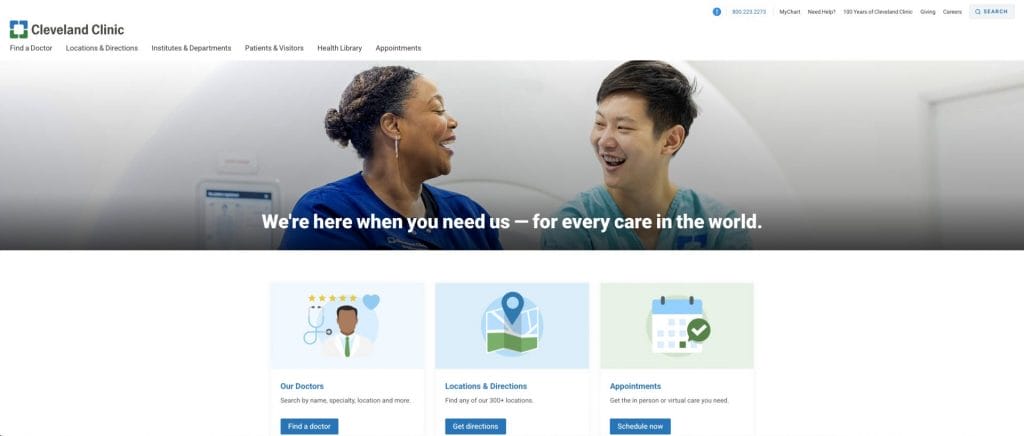
2. Building A Patient-Centric Website Experience
Your hospital website is effectively your digital front door that will shape your patient’s experience and affect conversion rates.
Designing For Real Patient Needs
Simple navigation labels like “Find a Doctor” or “Patient Portal” reduce uncertainty.
Calls-to-actions (CTAs) should be highly visible, with balanced colors, legible fonts and plain language to move visitors from curiosity to booking.
Ensuring Responsiveness And Accessibility
Mobile traffic outstrips desktop in many markets.
Practices that don’t offer mobile-friendly design may lose prospective patients.
Meanwhile, adhering to accessibility guidelines, like text for images and contrast-checked colors, improves reach among users with visual or physical impairments.
Maintaining Consistent Branding Across Channels
Consistency in tone, visuals and messaging — from your healthcare website to social media — reinforces trust.
Patients who recognize the same color palette, logos and key phrases are more likely to remember and return to your brand. Ensuring your printed materials, signage and online assets all share a cohesive style further cements brand credibility.
Johns Hopkins Medicine clearly highlights the four most common tasks that patients need to perform on their homepage — Find a Doctor, Find a Location, Make an Appointment and Access MyChart (the patient portal).
This approach reduces friction and aligns perfectly with user intent, particularly for returning patients or those seeking quick access to care.
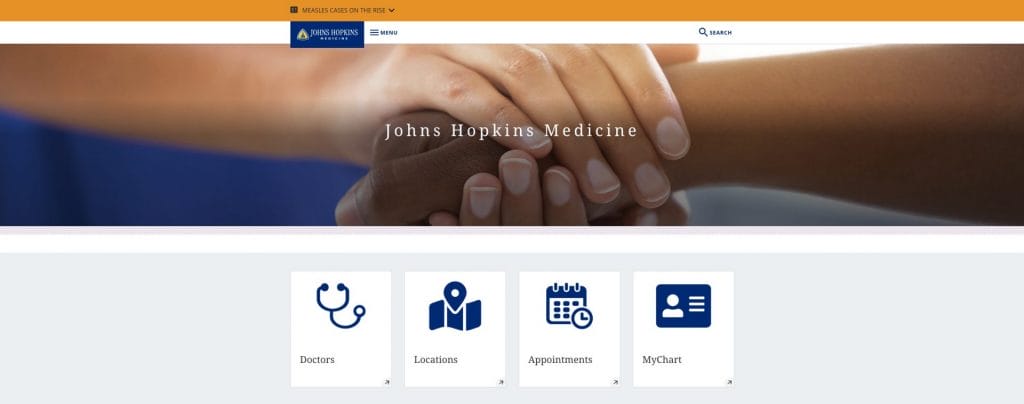
3. Implementing Strategic Search Engine Optimization (SEO)
Over half of online sessions start with a search query, many seeking healthcare information.
Successful SEO balances accuracy with readability. Search engines reward well-structured, trustworthy content, especially in the medical field.
Local SEO Drives High-Value Leads
Ensure your Google Business Profile is verified with correct details and business hours.
Online reviews, including star ratings, play a major role in local visibility.
Creating In-Depth Medical Content
Google’s E-E-A-T (Expertise, Experience, Authority and Trust) framework emphasizes detailed medical pages.
Healthcare providers must publish pages on specific conditions, treatments or procedures, clarifying both the “what” and the “why” behind each offering.
Research indicates that well-structured sites with valid schema markup and logically tiered categories — such as “Services > Cardiology > Heart Valve Repair” — rank more prominently.
Voice search is also on the rise, with many users issuing longer, conversational queries.
SEO best practices that address question-based searches can capture that emerging market segment.
Northwell Health optimized its website structure and standardized physician listings across Google profiles to improve local search visibility.
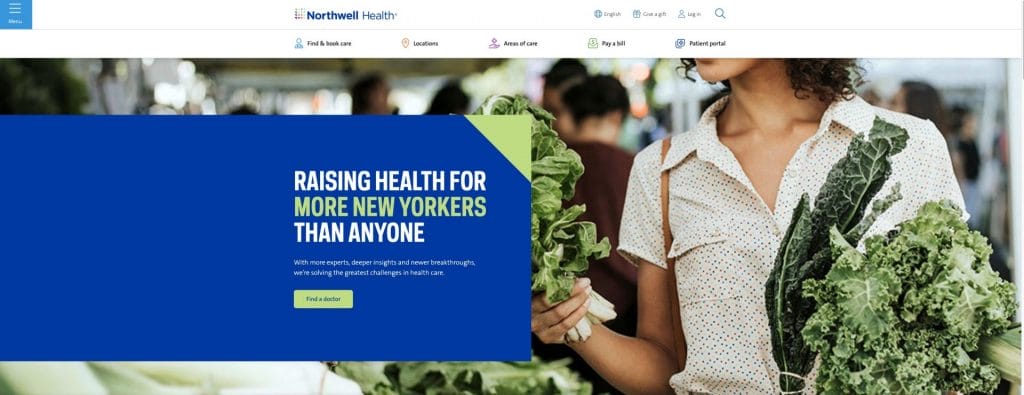
4. Utilizing Pay-Per-Click (PPC) Advertising For Quick Returns
While SEO takes time to bear fruit, PPC offers near-instant visibility for urgent searches such as “same-day surgical consult.”
Healthcare-focused PPC can yield high conversions when ads target specific, high-intent keywords.
Targeting High-Intent Keywords
Successful PPC campaigns revolve around targeted, high-intent keywords like “pediatric ENT specialist near me” or “book MRI appointment.”
Broad phrases, such as “health advice,” often invite unqualified clicks.
A refined approach employs negative keywords, like “job,” “salary” or “how to become” to filter out irrelevant traffic.
Carefully segmenting brand-related terms can also keep competitor ads at bay.
Tracking PPC ROI
Tools like Google Ads and call-tracking software show how many appointments result from each ad.
With PPC, small features, like ad extensions linking to scheduling pages, often boost click-through and conversion rates.
5. Creating Valuable Healthcare Content Marketing
With too much medical misinformation on the web, being a reliable resource sets your brand apart.
High-quality content drives both online traffic and patient loyalty.
Prioritizing Patient Education
Offer eBooks, videos or infographics that break down complex procedures. Clear, in-depth guides increase confidence, encouraging readers to book an appointment or recommend your facility.
Distributing Content Across Channels
Owned, earned and paid media each play a distinct role in maximizing your educational materials.
Thoughtful distribution involves repurposing popular blog posts into short email courses or turning article highlights into digestible social media updates.
Search snippets and viral videos can amplify brand awareness and credibility.
For example, Mayo Clinic’s regenerative medicine content hub includes a physician-focused video series and blog articles explaining emerging therapies.
It translates complex research into accessible, visual formats for patients, caregivers and referring clinicians.

6. Harnessing Social Media For Patient Engagement
Platforms like Facebook, Instagram, LinkedIn and TikTok connect you directly to current and prospective patients. Many users actively seek health tips and provider information in these channels.
Choosing Platforms And Messaging
Different channels draw distinct demographics.
Facebook and Instagram remain popular for general audiences, LinkedIn can help cultivate professional networks and TikTok increasingly attracts younger users seeking quick info.
Match the channel to the audience and focus on meaningful interaction, not just follower counts.
Paid Social Media Advertising
With privacy considerations in mind, social platforms let you target by location, interests or demographics.
Eye-catching creatives can pique interest but must remain factual to comply with medical advertising rules.
For instance, Columbia Medicine hosted a live session on Instagram to discuss the impact of artificial intelligence on diagnostics and patient care and how it will revolutionize healthcare.
7. Implementing Email Marketing Automation
Email marketing still delivers exceptional ROI.
Automated, HIPAA-compliant campaigns save time and personalize follow-ups based on patient segments.
Patient Segmentation
HIPAA-compliant segmentation tailors outreach to different patient groups without disclosing protected health details in unsecured messages.
Segmenting by previous services, location or stated health interests ensures individuals get relevant content — like reminders to refill prescriptions or invites to routine screenings.
Well-executed segmentation can multiply revenue by targeting the right people at the right time.
Personalized Drip Campaigns
The most successful campaigns employ drip sequences that greet new subscribers, guide them through your range of services and provide health tips connected to their stated interests.
Appointment reminders and check-up prompts keep your facility at the forefront of patients’ minds.
Over time, these automated flows elevate patient retention, as recipients feel more connected to your brand.
8. Optimizing Online Reputation Management
Nearly 75% of patients check online ratings before choosing a provider.
Positive feedback and prompt responses to criticism can make or break your online image.
- Review generation: Encourage satisfied patients to leave reviews on Google, Yelp or health-specific sites. Well-timed email or text invitations within 24 hours of a visit often yield the best response.
- Responding to feedback: A timely, courteous reply, without violating HIPAA, can calm upset reviewers and demonstrate accountability. Professional empathy often turns negative reviews into neutral or even positive outcomes.
Though digital channels dominate healthcare marketing, offline tactics like community health fairs or local print ads can still drive patient engagement.
Combining offline promotions, e.g., billboard mentions of your new telehealth service with a strong online presence often amplifies overall campaign reach.
Cedars-Sinai Medical Center engages with their patients and replies to their reviews on Google:
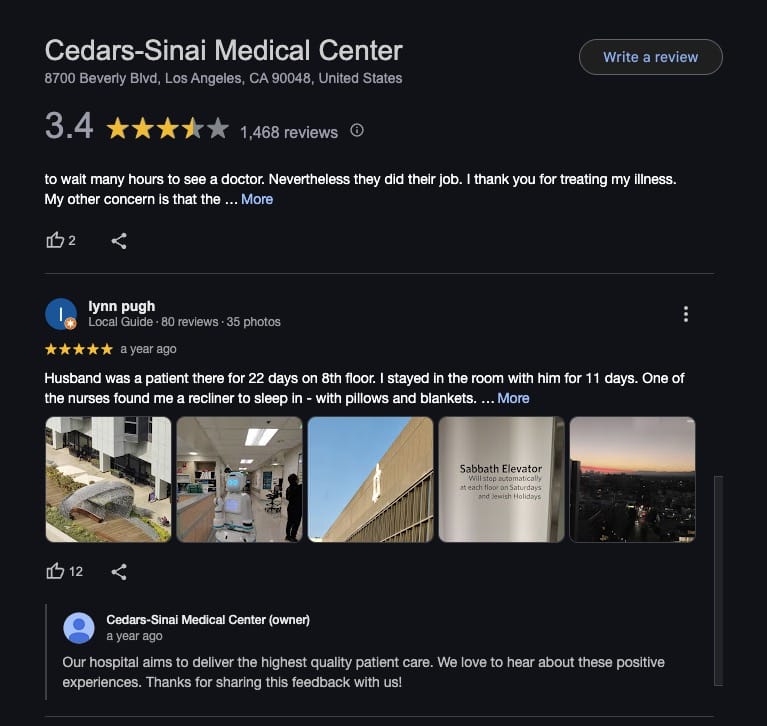
9. Developing Strategic Physician Referral Programs
Complex procedures, such as organ transplants or advanced oncology, often rely heavily on physician referrals.
Solid referral networks thrive on transparency and communication.
- Digital referral tools: Centralized portals track incoming referrals, schedule follow-up visits and reduce administrative friction. Faster updates improve patient experiences and strengthen referring relationships.
- Relationship building: Specialists who respond swiftly and communicate outcomes keep referral sources loyal. Regular check-ins, co-hosted webinars, and shared resources further reinforce these ties.
MD Anderson launched a secure referral dashboard, enabling external physicians to track patient progress and streamlining care coordination.
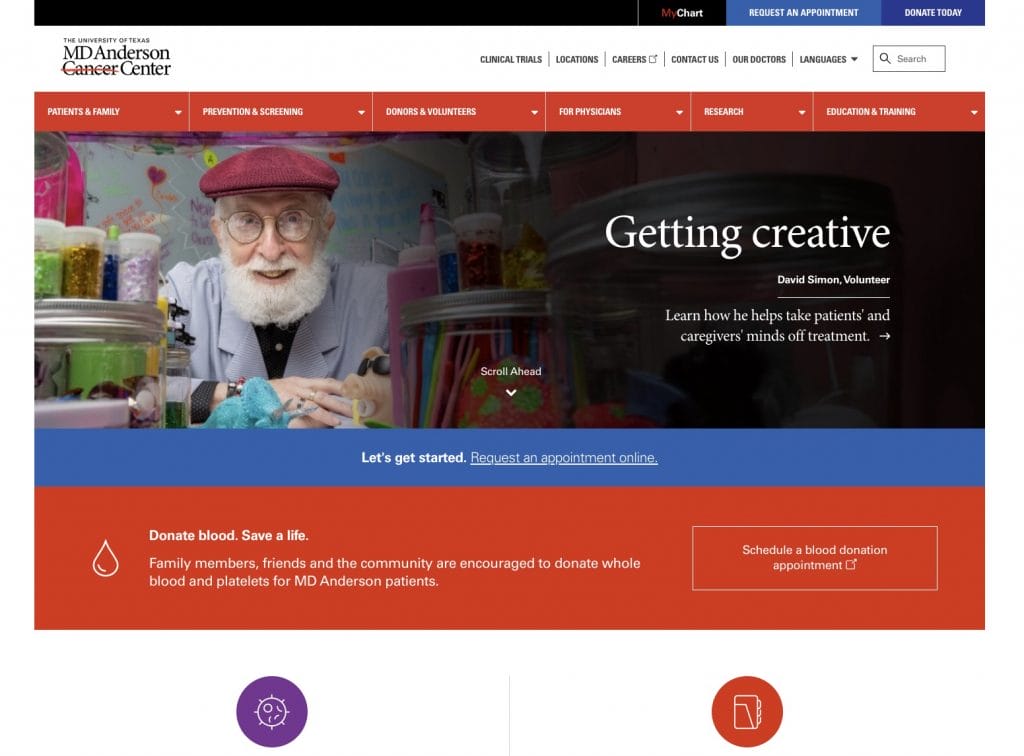
10. Utilizing Telehealth In Your Marketing Strategy
Telehealth exploded in popularity and remains in high demand.
Patients appreciate quicker scheduling and reduced exposure to illness.
Effective marketing addresses these conveniences and clarifies the steps for a virtual visit.
- Promoting virtual care: Feature telehealth prominently on your website and in outreach emails, explaining technology requirements and appointment flows. Even a brief introductory video can lower patient hesitations.
- Converting virtual visits to in-person care: Some conditions need in-office diagnosis. Post-visit surveys help identify ongoing symptoms, prompting convenient scheduling for a follow-up exam.
For example, Intermountain Healthcare’s telehealth services allow more convenience for patients, which leads to improved patient satisfaction.
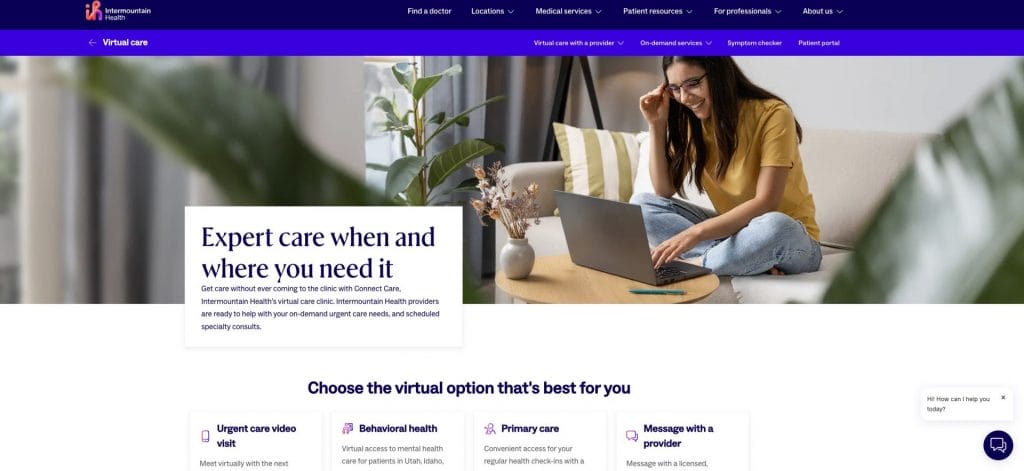
11. Implementing Marketing Automation For Healthcare
Automating your marketing amplifies reach while maintaining personalization.
The best systems tie into your CRM, triggering messages based on user actions or preset data points.
- Mapping the patient journey: From awareness to scheduling, identify each contact point, such as emails, appointment forms, triage calls and automate relevant messages at each stage.
- Personalization at scale: AI-assisted segmentation flags patient groups likely to need specific services. HIPAA compliance and de-identification remain crucial whenever sharing health details.
Ascension’s personalized nudge campaigns, piloted in three markets, raised annual wellness visit scheduling rates from 5.1% to 26.2%, prompting a system-wide rollout to over 42,000 patients that generated 11,200+ new appointments.
Additionally, text-based nudges ahead of primary care visits led to a 20% increase in care gap closures for vaccinations, cancer screenings and diabetes management.
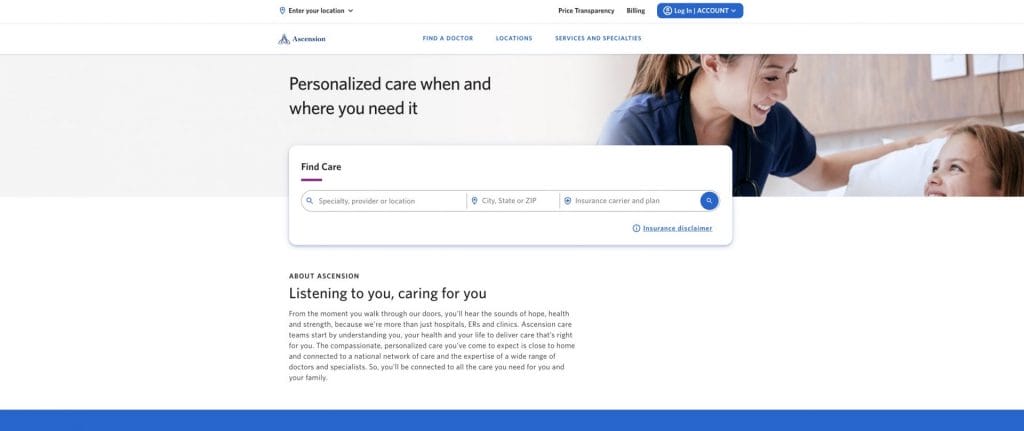
12. Addressing Healthcare Disparities Through Inclusive Marketing
Inclusive marketing isn’t just socially responsible — it broadens your reach among diverse communities.
Patients often prefer providers who understand their culture, language and unique concerns.
- Developing culturally competent materials: Translate key information into multiple languages as needed. Include relevant cultural references that resonate with local communities.
- Outreach in underserved areas: Community-level efforts, such as health fairs or targeted screening events, can address structural barriers. Working with local nonprofits or churches fosters trust, making it easier for new patient groups to learn about your services. Over time, these efforts lift brand perception and establish your hospital as a champion for equity in healthcare.
In 2023, NYC Health + Hospitals ran a multilingual, multi-platform campaign that significantly increased preventive screenings in historically low-engagement neighborhoods.
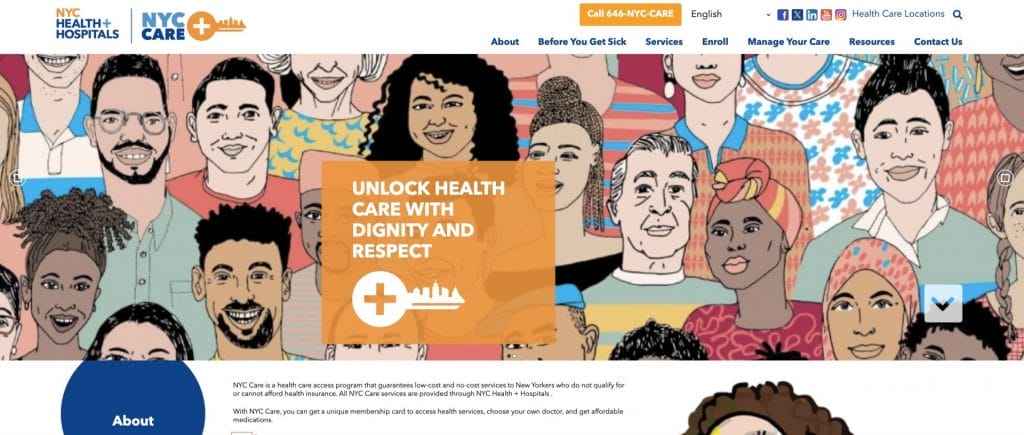
13. Measuring And Optimizing Marketing ROI
Attributing revenue gains to specific marketing efforts clarifies which campaigns convert. This insight drives better budget decisions and reveals which channels need improvement.
Attribution Modeling
While single-touch attribution (crediting only the first or last click) might seem simpler, it can misrepresent how patients actually move toward booking.
Multi-touch models distribute credit across all interactions, from reading a blog post to clicking a retargeting ad. Doing this reveals hidden strengths in your campaign mix, helping you scale or reallocate intelligently.
Cost Per Acquisition Analysis
Knowing how much you pay to acquire a new patient is central to budget allocation.
Hospitals often measure cost per acquisition separately for each service line — pediatrics, orthopedics, cosmetic procedures — because each draws a unique audience and might require different ad strategies.
If cost per acquisition outstrips patient lifetime value, you know it’s time to refine or redirect resources.
Evaluating Brand Awareness
In addition to CPA and revenue metrics, track brand-awareness indicators such as search volume for your hospital’s name, social share of voice and sentiment analysis.
These measures reveal whether long-term brand equity and recognition are improving — a key factor in influencing patients before they ever convert.
14. Ensuring HIPAA Compliance In Marketing
Marketing that uses Protected Health Information (PHI) without consent risks severe penalties.
All data-capturing tools must meet HIPAA requirements.
- Privacy-compliant data collection: The U.S. Office for Civil Rights has emphasized that tracking pixels on healthcare sites often capture PHI without user awareness, violating HIPAA. Marketers must ensure all data is either anonymized or processed by a HIPAA-compliant partner with a valid Business Associate Agreement (BAA). Removing or neutralizing these risk points fosters patient trust.
- Secure marketing tech stack: Any platform handling PHI must use encryption and follow strict access controls. Annual HIPAA refresher sessions help staff avoid accidental overshares.
Bear in mind that HIPAA is just one piece of the puzzle.
If your telehealth services extend across state lines or internationally, ensure you comply with varying licensure laws and privacy regulations (like GDPR in Europe).
Periodic legal reviews and clear patient consent forms can help you avoid potential pitfalls.
15. Allocating Healthcare Marketing Budgets Effectively
Recent research suggests healthcare marketing budgets shrank from 9.6% of total revenue in 2023 to 7.2% in 2024.
Leaner budgets call for precise channel spending.
- Budget distribution across channels: A balanced mix of PPC, SEO, social ads and offline outreach often works best. Remain agile — quarterly or monthly reviews help you shift spending to top-performing campaigns.
- Seasonal and performance-based shifts: Demand spikes for specific services, e.g., flu shots in fall. Ramping up digital ads and relevant content during these windows ensures timely ROI. If direct mail underperforms, reallocate to digital platforms fast rather than waiting out a full quarter.
Tracking Key Healthcare Marketing KPIs
Beyond raw traffic figures, Key Performance Indicators (KPIs) demonstrate how marketing shapes new appointments, brand perception and revenue growth.
Key KPI clusters include:
- Cost-efficiency metrics (Cost Per Lead, Cost Per Acquisition): Helpful in identifying if certain campaigns overshoot budgets for minimal returns.
- Conversion & engagement (Form Submissions, Call Tracking, Patient Portal Logins): Shows which content or ads lead to tangible actions like scheduled appointments.
- Patient retention (Repeat Visits, Email Open Rates, Referral Sources): High retention lowers acquisition costs, as satisfied patients often recommend your care to others.
- Reputation scores (Online Ratings, Net Promoter Score, Social Listening): Positive reviews and high NPS reduce friction for incoming leads who arrive with preconceived trust.
Positive KPI trends, like declining CPA or rising star ratings, signal your strategy is working. Dips warn you to refine campaigns or train staff on new procedures.
Data-Driven Insights For Long-Term Strategy
Even if you adopt all 15 strategies, the digital healthcare environment changes rapidly.
Staying ahead means using data to adapt. Here’s how:
- Monitor shifts regularly: Track new regulations, tech trends and local market changes.
- Check analytics frequently: Identify underperforming service lines or seasonal spikes (e.g., mental health or pediatrics).
- Spot emerging audiences: Use data to uncover overlooked patient groups and adjust campaigns accordingly.
- Stay agile: Pivot quickly based on real-time insights to avoid missed opportunities.
- Adopt new tools: Leverage AI chatbots, automated scheduling, and wearable tech integrations to meet modern patient expectations.
- Balance strategy with empathy: Combine analytics with inclusive messaging to boost long-term patient acquisition and retention.
Digital Silk’s Healthcare Website Examples
At Digital Silk, we stay at the forefront of medical website best practices to deliver platforms that are user-friendly, informative and optimized for patient engagement.
Here are three recent projects that showcase our approach:
1. IVE Mental Health
We partnered with IVE Mental Health to develop a welcoming digital space that mirrors the practice’s mission of accessible, affordable care.
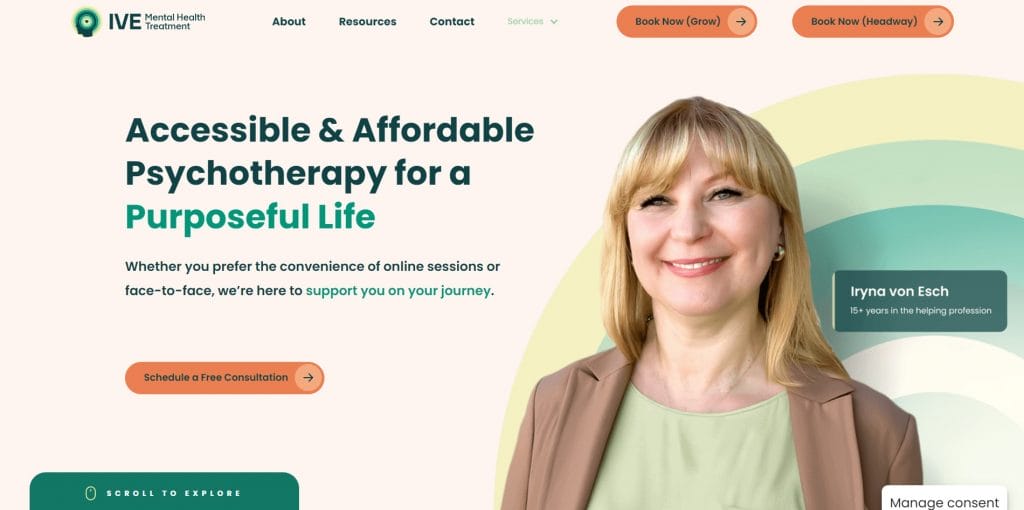
Our team introduced a distinctive brand identity and color palette for easy recognition, paired with a streamlined site structure that keeps vital resources—like therapy options and appointment booking—just a click away.
Result: A clean, modern interface that simplifies patient navigation and fosters a comforting environment for mental health discussions.
2. Mezocare
For Mezocare’s healthcare tourism services, we built a user-centric platform that highlights their specialized medical travel packages in Mexico.
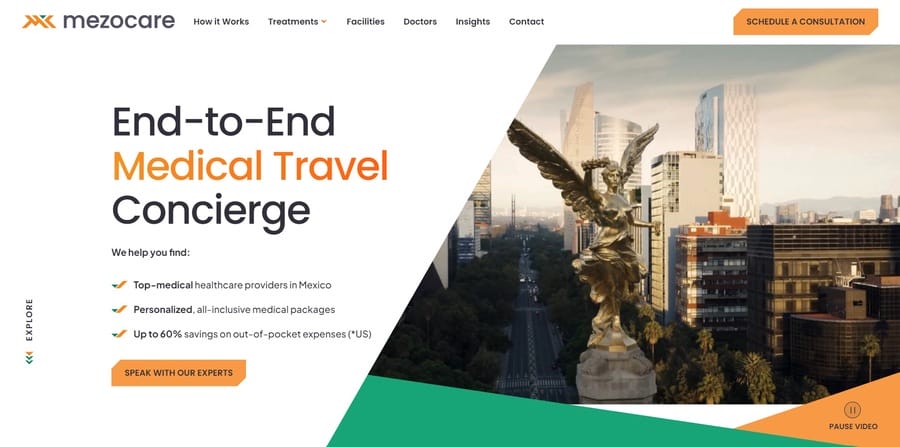
Vibrant visuals and an organized content structure guide visitors through treatment details, pricing, and travel logistics in one cohesive experience.
Result: A scalable website featuring advanced SEO strategies, helping Mezocare rank for relevant healthcare tourism queries and reach a wider audience of prospective patients.
3. Assisted Living Direct
Assisted Living Direct approached us to revamp their website so patients searching for care facilities in Maryland could easily find relevant information.
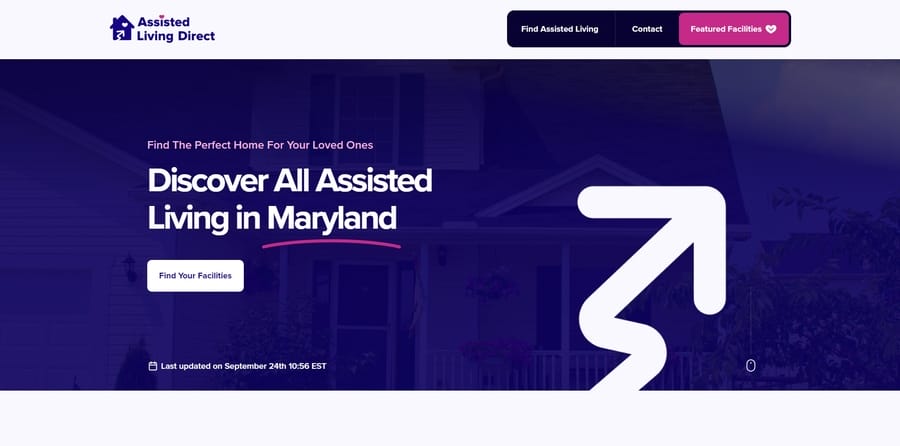
Through strategic UX and UI enhancements, we organized detailed medical data into a straightforward layout and introduced prominent CTAs for booking tours or getting more information.
Result: An intuitive site architecture that supports Assisted Living District’s future growth and makes the patient journey seamless from the homepage to the final inquiry.
Design A Conversion-Driven Healthcare Website With Digital Silk
A secure and user-friendly healthcare website goes a long way toward building trust and credibility with current and future patients.
Digital Silk’s integrated approach combines award-winning design, branding expertise, custom development and healthcare digital marketing strategies to ensure every aspect of your website meets the highest standards.
Our services include:
- Web design for healthcare brands
- Custom web design
- Custom web development
- Branding services
- Healthcare digital marketing and strategy
- Healthcare branding
For each project, we emphasize transparent communication, timely updates and measurable results. Whether you’re a large hospital network or a private practice, our scalable, patient-focused solutions empower you to stay ahead in a competitive market.
Ready to build a website that resonates with today’s healthcare consumers? Contact our team, call us at (800) 206-9413, or fill out the Request a Quote form below to schedule a consultation.
"*" indicates required fields


